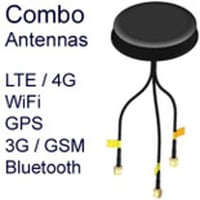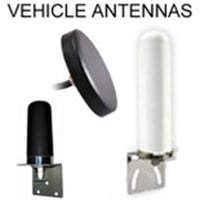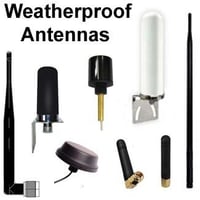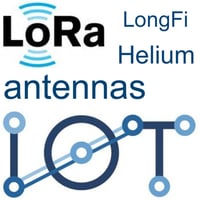Vehicle Antennas
Vehicle Antennas:
Through-hole mount antennas (puck style), adhesive mount antennas, and magnetic mount antennas for mounting on trucks, cars, construction and mining vehicles.
Most of the vehicle antenna options mount on a fender or on the roof of the vehicle.
For the antennas that include a cable: The antenna cable is double-shielded, low-loss and very flexible. The cable-type is equivalent or better than LMR-100: Coax with black jacket has the same or better signal-loss-per-meter and flexibility as LMR100, and less attenuation (signal loss) than RG174. The higher quality of the cable of this antenna translates into lower loss/better performance. These antenna cables are rated for outdoor weatherproof use and are also suitable for indoor use. Recommended tightest continuous bend radius is 1.1 inch (28mm).
Puck Antennas with through-hole mounting:
The distinctive ‘hockey puck’ shape of puck antennas lends them to being secured to a variety of surfaces with through-hole mounting. Through-hole mounting offers a more secure hold between the puck antenna and its mounting surface (for example a vehicle roof) improving the reliability of a radio frequency set up, especially if on the move.
A through-hole mounted antenna is mounted by placing the puck antenna through a pre-drilled hole. The antenna cables and any other components run through the hole and are therefore shielded from environmental exposure. Screw-mounting on the antenna can be used to secure the puck antenna on its underside. When properly fixed, no cabling should be seen. Through-hole mounting is often used for emergency vehicles or aerospace applications where an antenna may be exposed to extremes of speed, temperature or force. Roof-top mounting enables the antenna to receive signal without being obscured by a metal roof.
Puck antennas may be both directional and omni-directional. Puck antennas may also possess a waterproof skirting for an optimal seal against moisture ingress, adding to their weather resilience. Many units carry an IP67 indicating waterproofing to up to a meter of depth for 30 minutes. However through-hole mounted antennas can be difficult to access once installed and over time they can develop water leakage and rusting.
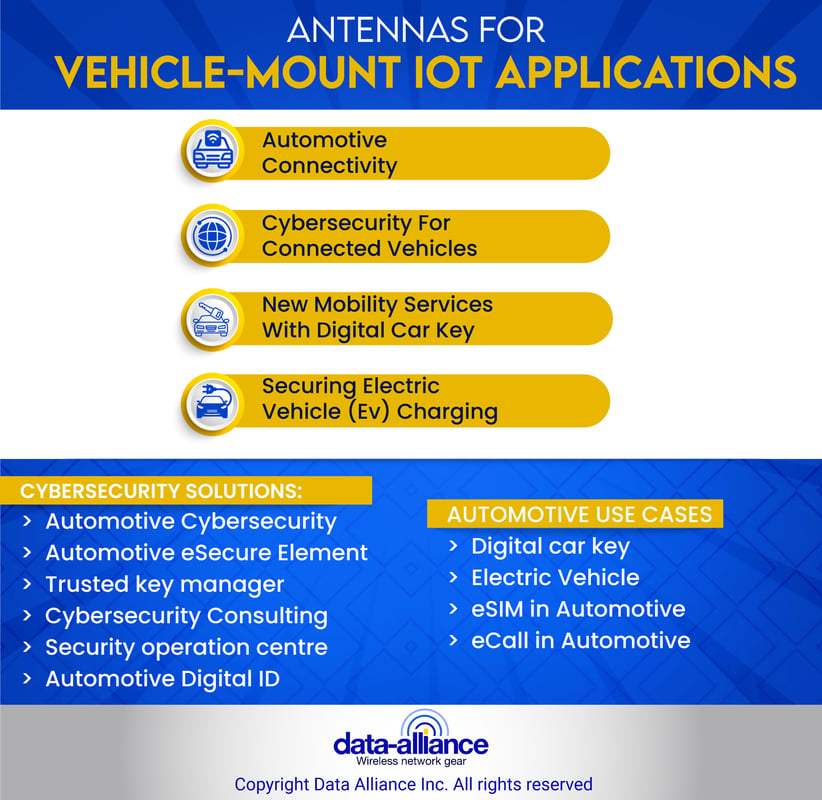
Magnetic Mount Antennas:
Magnetic mount antennas offer the flexibility of surface mounting than can be removed or altered when desired. It is a great temporary solution for mounting an antenna meaning they can be rapidly deployed as, when and where necessary. Magnetic mounts allow antennas to be readily installed without drilling or damage to a surface, only needing to be set in the desired place. Of course they require a metal surface such as a vehicle roof or bonnet. They secure the antenna to the surface at its base. If the magnet is of a suitable quality a sound hold can be achieved which makes the antenna applicable and functional on moving vehicles (provided they have a metal roof).
- Typical magnetic mounts components include:
- A magnet enclosed within a heavy duty plastic cover
- A body encased in molded plastic
- A brass terminal insert for connecting the antenna
- A length of coax cable terminating in an FME or other connector type
High quality magnetic mounts are designed with waterproofing around the mount’s base to provide a reliable seal to the base surface. Within the mount an antenna stud fixing allows the application of the antenna of choice. Antennas can be applied and removed without moving the magnetic mount. Magnetic mount antenna set ups typically include the magnetic base, a whip antenna and coax cable which will add height if vehicle clearance is an issue.
Purpose of LTE-AUX antenna-cable connection
Long Term Evolution also known as LTE or 4G antennas are typically equipped with two connecting coaxial cables:
- LTE-main and
- LTE-AUX
These cable connections are provided in order to achieve an optimal LTE set up and performance. LTE uses a wireless technology called MiMo. MiMo stands for multiple input, multiple output and utilizes multiple antennas which transmit and receive cellular signals. For this technology to perform optimally with high data rates a minimum of 2 antennas are required. Connecting both LTE-main and LTE-aux cable from the main to a second antenna will massively improve both the reception and throughput of 4G LTE. A dual antenna setup utilizing both cables and connections optimizes connection stability by using multiple radio paths to create spatial diversity as well as absorbing any cellular interference. The main antenna both transmits and receives data and the auxiliary is a receiving antenna. In addition, a GPS antenna can be alternatively connected to the auxiliary input to create an LTE / GPS combo antenna set up.
An LTE GPS combo antenna is a desirable set up for professionals such as emergency workers or field operatives who need high quality connectivity with mobility and offers the benefits and use of both 4G and GPS technologies. Combination antennas integrated in a single unit save on costs, are easier to install and have a more pleasing appearance.

